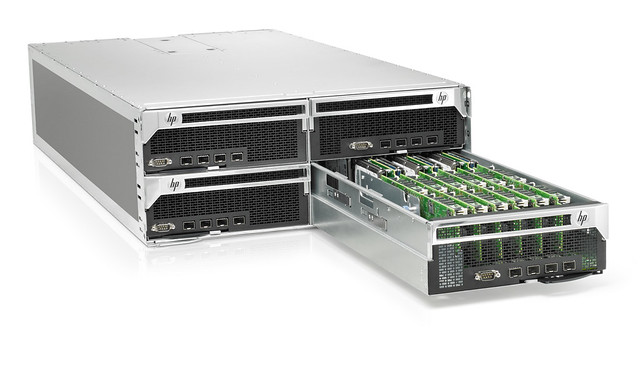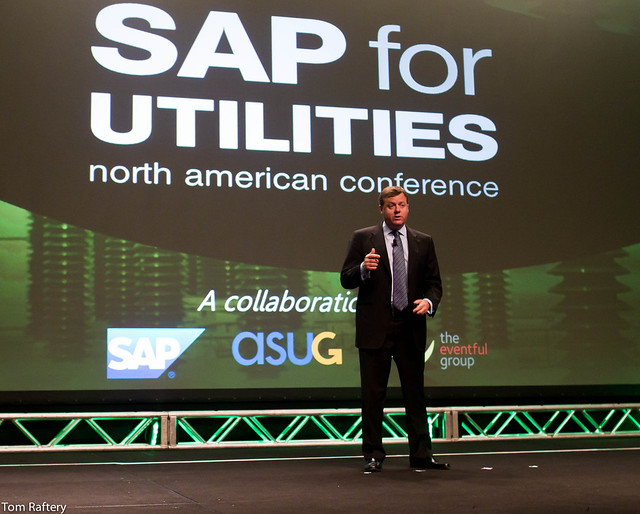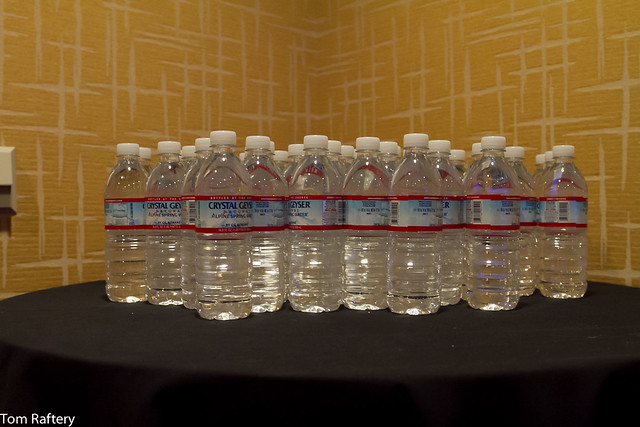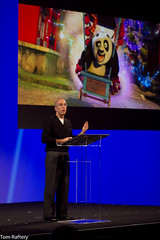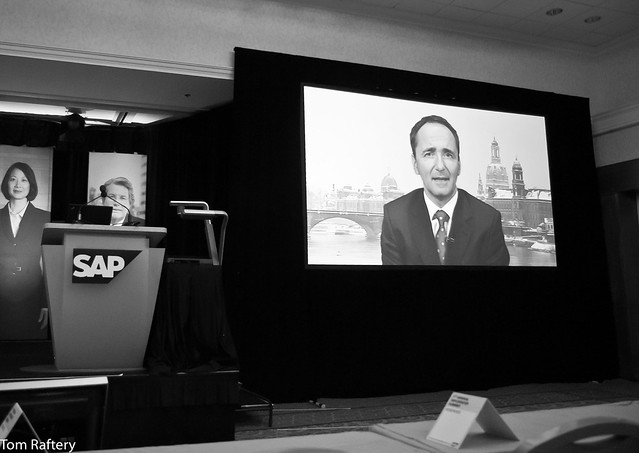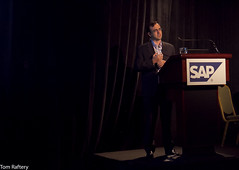And we’re back this week with the second instalment in our Data Center War Stories series (sponsored by Sentilla).
This second episode in the series is with Jürgen Burkhardt, Senior Director of Data Center Operations, at SAP‘s HQ in Walldorf, Germany. I love his reference to “the purple server” (watch the video, or see the transcript below!).
Here’s a transcript of our conversation:
Tom Raftery: Hi everyone welcome to GreenMonk TV. Today we are doing a special series called the DataCenter War Stories. This series is sponsored Sentilla and with me today I have Jürgen Burkhardt. Jürgen if I remember correctly your title is Director of DataCenter Operations for SAP is that correct?
Jürgen Burkhardt: Close. Since I am 45, I am Senior Director of DataCenter Operations yes.
Tom Raftery: So Jürgen can you give us some kind of size of the scale and function of your DataCenter?
Jürgen Burkhardt: All together we have nearly 10,000 square meters raised floor. We are running 18,000 physical servers and now more than 25,000 virtual servers out of this location. The main purpose is first of all to run the production systems of SAP. The usual stuff FI, BW, CRM et cetera, they are all support systems, so if you have ABAP on to the SAP in marketplace, you, our service marketplace, this system is running here in Waldorf Rot, whatever you see from sap.com is running here to a main extent. We are running the majority of all development systems here and all training — the majority of demo and consulting system worldwide at SAP.
We have more than 20 megawatt of computing power here. I mentioned the 10,000 square meters raised floor. We have 15 — more than 15 petabyte of usable central storage, back up volume of 350 terabyte a day and more than 13,000 terabyte in our back up library.
Tom Raftery: Can you tell me what are the top issues you come across day to day in running your DataCenter, what are the big ticket items?
Jürgen Burkhardt: So one of the biggest problems we clearly have is the topic of asset management and the whole logistic process. If you have so many new servers coming in, you clearly need very, very sophisticated process, which allows you to find what we call the Purple Server, where is it, where is the special server? What kind of — what it is used for? Who owns it? How long is it already used? Do we still need it and all that kind of questions is very important for us.
And this is also very important from an infrastructure perspective, so we have so many stuff out there, if we start moving servers between locations or if we try to consolidate racks, server rooms and whatsoever, it’s absolutely required for us to know exactly where something is, who owns it, what it is used for etcetera, etcetera. And this is really one of our major challenges we have currently.
Tom Raftery: Are there any particular stories that come to mind, things issues that you’ve hit on and you’ve had to scratch your head and you’ve resolved them, that you want to talk about?
Jürgen Burkhardt: I think most people have a problem with their cooling capacity. Even if we are — we are running a very big data center. We have a long capacity down the other side. There was room for improvement. So what we did is we implemented a cool aisle containment system by ourselves.
So there are solutions available, you can purchase from various companies. So what we did is, so first of all we measured our power and cooling capacity and consumption in very detail, and on basis of that we figured out a concept to do that by ourselves.
So the first important thing is today I think it’s standard. We have to change our requisitions, especially in the DataCenter which is ten years old, and which now also got the premium certificate. That data center, the rack positions were back front, back front, back front and we had thousands of servers in that data center.
So what we are now doing, already did to some extent in that data center is, we had to change the rack positions front, front to implement the cold aisle containment system. And we did — so IT did that together with facility management. So we had a big project running to move surplus shutdown, racks, turn whole — the racks in whole rows, front to front and then built together with some external companies, it was very, very normal easy method. Buying stock in the next super market more or less, build the containment systems and that increased where we have implemented it the cooling capacity by 20%.
Tom Raftery: Is there anything else you want to mention?
Jürgen Burkhardt: Within the last three to four years we crashed against every limit you can imagine from the various type of devices which are on the — available on the market, because of our growth in size. The main driver for our virtualization strategy is the low utilization of our development and training servers. So what we are currently implementing is more or less a corporate cloud.
When a few years ago, we had some cost saving measures, our board said, you know what, we have a nice idea, we shutdown everything, which has a utilization below 5% and we said well, that might not be a good idea, because in that case we have to shutdown everything, more or less. And the reason if you imagine a server and an SAP running, system running on it and a database for development purpose, maybe a few developers are logging in, this is from a CPU utilization, you hardly see it, you understand.
So the normal consumption of the database and the system itself are creating most of the load and the little bit development of the developers is really not worth mentioning. And even if they are sometimes running some test cases, it’s not really a lot. The same is true for training, during the training sessions there is a high load on the systems.But on the other side these systems are utilized maybe 15% or 20% maximum, because the training starts on Monday, stops at — from 9:00 to 5:00. Some trainings even go only two or three days. So there is a very low utilization. And that was the main reason for us to say, we need virtualization, we need desperately and we achieved a lot of savings with that now and currently we are already live with our corporate cloud.
And we are now migrating more and more of our virtual systems and also the physical systems which are now migrated to virtualization into the corporate cloud. With a fully automated self service system and a lot of functionality which allows us to park systems, unpark systems, create masters and also the customers by himself. This is very interesting and this really gives us savings in the area of 50% to 60%.
Tom Raftery: Okay Jürgen that’s been fantastic, thanks a million for coming on the show.

